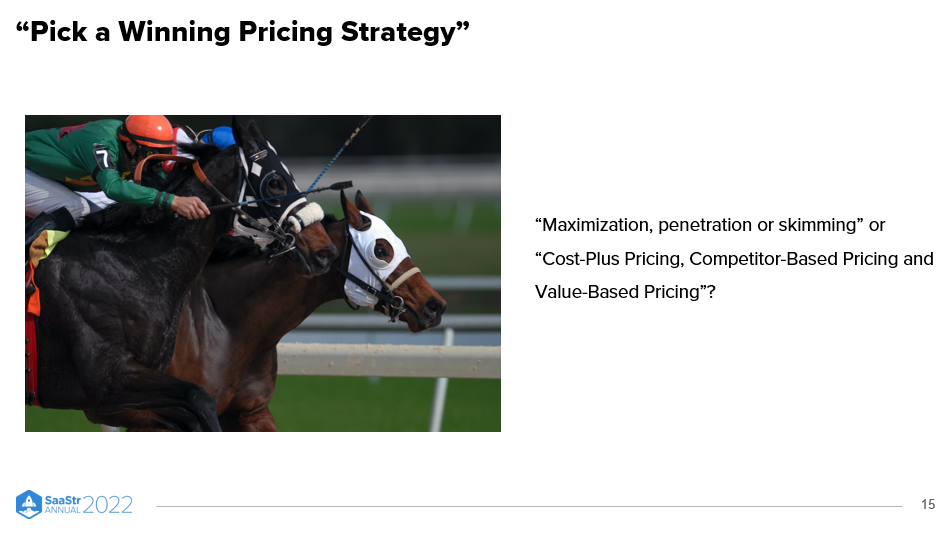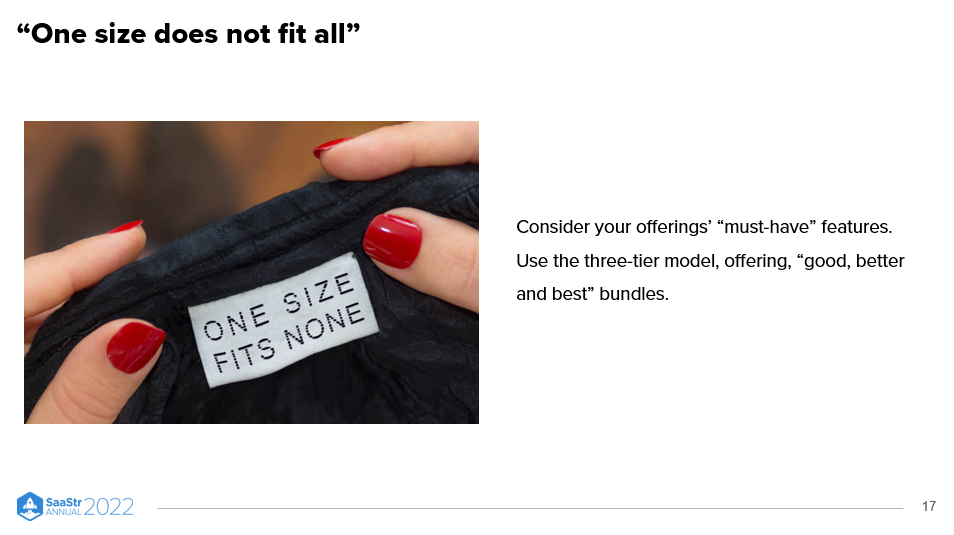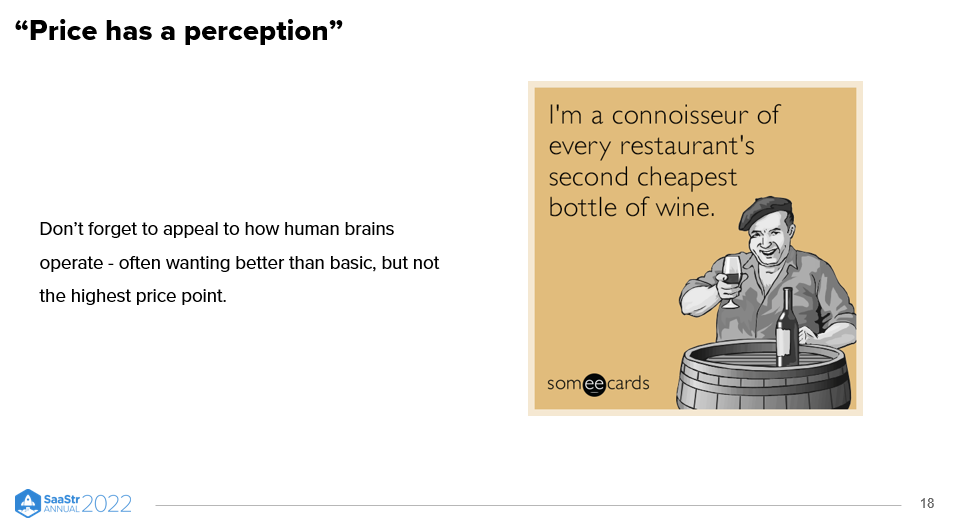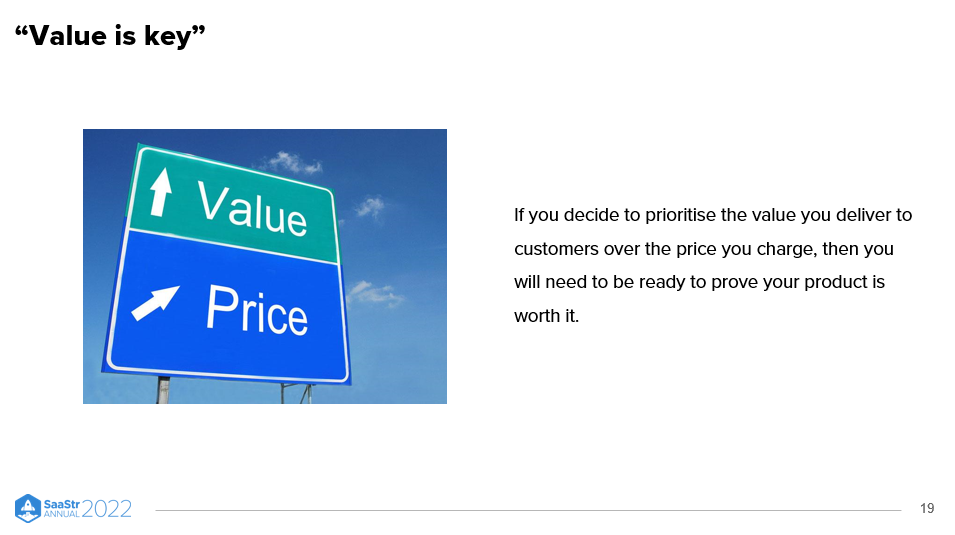No pressure, but the pricing model you choose can make or break your SaaS business. But it can be difficult for founders to figure out the right structure for their business. Fortunately, other successful SaaS leaders have experience with this challenge. In a special session from SaaStr Annual 2022, Hristo Borisov (CEO & Founder at Payhawk) and Désirée Schildt (VP of Marketing at Payhawk) share their secrets to choosing the right pricing strategy that can make a premium business.

The Payhawk Pricing Journey
Payhawk is an international spend management platform that helps companies automate their spending and expenses. But the company underwent its own journey to discover the most effective pricing model –– Payhawk went from trying 15 pricing models in the first two years to deciding on premium pricing and offering cashback.
To make this decision, company leaders had to decide what kind of company they wanted to be. Where and how would they monetize? They also needed to determine what sort of customers they wanted to serve.
Borisov says, “The final thing we decided to take into account is really a triangle called trade-off on pricing. So in the triangle, you have …acquisition strategy, monetization, and retention, and when you’re putting together your strategy, you have to pretty much decide; Is your pricing strategy for being aggressive but scaling and going for acquisition? Is it more about monetization and making the most of the existing market? Or, is it more about retention of existing customers?”
Most startups go with freemium, which can be favorable for customer acquisition early on. Still, the danger is that the business won’t be able to pull back and recover from that freemium model down the road.
What Payhawk did differently is that instead of focusing on freemium, they focused on monetization. They didn’t try to acquire a bunch of customers but instead focused on making the most of the customers they had. They continued iterating their pricing until finally, they decided to try cashback for the customers spending on their platform. Customers receive 1.5% unlimited cashback up to the amount of their subscription.

The Most Common Pitfalls of Pricing
But besides your general company goals, there are nuances to consider when you produce and price a product. Schildt broke down four of the most common pitfalls to watch for when determining your pay structure.
- Feature Shock: Cramming too many features into one product, which assumes that customers don’t know what they want. This creates a solution that does not resonate with customers and is perceived as overpriced. Schildt describes it this way: “Feature shock happens if companies cram too many features in one solution. So the product becomes kind of over-engineered…so in the end, the customer will not be willing to pay for a product with loads of features that they are actually not demanding.” Schildt goes on to share some valuable advice: “It is much more important that you create a solution that is really targeted to your customer segment, and don’t try to build a product that fits-it-all.”
- Minivations: Base pricing on what it costs to produce a product rather than on the value it provides to customers will cause a business to leave big profits on the table. This can occur when a company prices its product too low. This often happens when the product developers underestimate the value that the product brings to customers.
- Hidden Gems: Perhaps the most heartbreaking of the bunch, this type of pitfall describes the would-be winners that never left the starting gate. Businesses may kill market potential when they fail to exploit breakthroughs. Schildt comments, “Hidden gems are winning, blockbuster products that were never properly introduced to the market. Most of the time, the reason is that it’s not in the company’s core business, or companies are afraid that it might cannibalize the existing business.”
- Undeads: Launching products that are DOA. These products are the answers to questions that no one is asking or are a wrong answer to a right question.

Willingness to Pay, Value-Based Pricing, and the Pros and Cons are Going Free
Never subscribe to the notion that “if you build it, they will come.” They seldom will unless you have done your homework. This means that you clearly understand your main pricing anchor and have precise data proving what your customers are willing to pay for your product or services.
Once you have built confidence in your core product and its value, you can start the base pricing there. Then work in value-based pricing based on the customer journey. What else would your customer base want, and what would simultaneously deliver the most value and make your product stickier?
So, should your business go freemium or premium? Consider the basic pros and cons:
- Pros:
- Decreased CAC as the barrier to entry is low.
- Creates fanbase to drive advocacy
- Easier than identifying WTP
- Cons:
- It doesn’t support smart unit economics
- It’s a SaaS tightrope walk
Every business is different, so no single path is suitable for everyone. However, if you go freemium, have a pricing structure that gives your non-paying or low-paying customer base to stay happy, but not so much that it devalues your paid options.
Key Takeaways
- When deciding on pricing, consider what kind of company you want to be and what customer segments you want to serve.
- Avoid feature shock by cramming too many features into a single product –– it can inadvertently devalue your offerings.
- If you choose freemium, have a strategy for consistently pleasing your non-paying base but delivering enough value that your paying customers are happy to continue forward with you.
The post How Not to Go Cheap: The Data Behind Staying Away from Freemium and Focusing on Premium with Payhawk CEO Hristo Borisov and VP of Marketing Désirée Schildt (Video) appeared first on SaaStr.
via https://www.aiupnow.com
Amelia Ibarra, Khareem Sudlow
